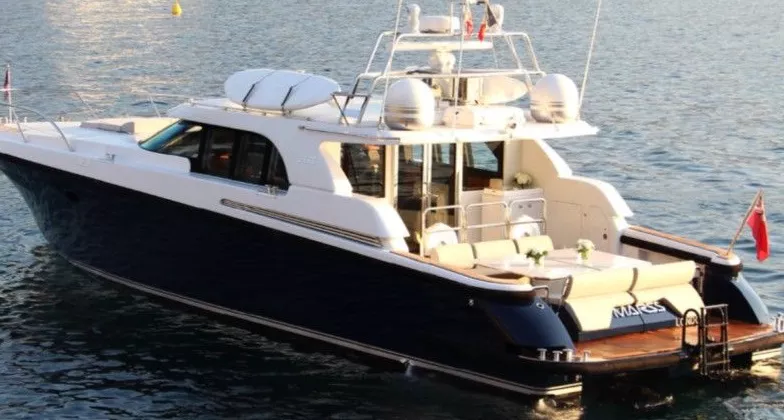Motor Yacht Loon, a 68-meter (221-foot) luxury superyacht, has garnered significant attention in the maritime world. Renowned for its exceptional design and luxurious amenities, Loon has been a prominent fixture in luxury yacht charters. As of recent reports, Loon is listed for sale with an asking price of $47.5 million USD.
The decision to sell such a distinguished vessel prompts questions about the underlying reasons. Understanding these factors requires a comprehensive analysis of the yacht’s history, market dynamics, and broader economic influences.
The Origin and Evolution of Motor Yacht Loon
Construction and Design
Loon was constructed by Icon Yachts and launched in 2010. The exterior design was crafted by the British studio Redman Whiteley Dixon, while Studio Linse was responsible for the interior. In 2014, the yacht underwent a significant refit, extending its length by 5 meters to include a beach club and an infinity pool, enhancing its appeal for luxury charters.
Ownership and Operational Highlights
The yacht has experienced notable ownership changes. Initially owned by Russian financier Alexander Mazanov, Loon’s history became intertwined with financial controversies. Mazanov faced legal challenges, including charges of embezzlement and attempted bribery, leading to his international fugitive status.
Despite these challenges, Loon continued to thrive in the charter market. Under the management of Captain Paul Clarke, the yacht achieved remarkable charter revenues, grossing up to $13 million in an 18-month period, with nearly $4 million in forward bookings.
Market Dynamics Influencing the Sale
Charter Market Saturation
The luxury yacht charter market has seen significant growth, leading to increased competition among yacht owners. New entrants and a broader selection of vessels have made it more challenging for individual yachts to maintain high occupancy rates. Owners may choose to sell their yachts to capitalize on market value before potential revenue declines.
Economic Factors
Global economic fluctuations play a crucial role in luxury asset markets. Economic downturns or uncertainties can lead to reduced demand for high-end charters and sales. Owners might decide to liquidate assets like yachts to mitigate financial risks or reallocate resources.
Maintenance and Operational Costs
Operating a superyacht involves substantial ongoing expenses, including crew salaries, maintenance, docking fees, and insurance. For some owners, the financial burden of maintaining a yacht like Loon may outweigh the benefits, prompting a sale.
Strategic Business Decisions
Fleet Expansion or Diversification
Yacht management companies or owners with multiple vessels might sell an existing yacht like Loon to fund the acquisition of a new model with updated features or to diversify their fleet. This strategy allows them to offer clients a range of options and stay competitive in the market.
Brand Positioning and Marketing
The sale of a high-profile yacht like Loon can serve as a strategic marketing move. It generates media attention and reinforces the brand’s presence in the luxury market. Such a sale can attract potential buyers interested in owning a vessel with a storied history and established reputation.
Potential Buyer Considerations
Investment Value
Purchasing a yacht like Loon represents a significant investment. Buyers will assess the yacht’s condition, maintenance history, and potential for revenue generation through charters. The established brand and charter reputation of Loon enhance its attractiveness as a business investment.
Lifestyle and Prestige
Beyond financial considerations, owning a yacht like Loon offers unparalleled luxury and status. The yacht’s design, amenities, and history provide a unique lifestyle experience, appealing to buyers seeking exclusivity and prestige.
Conclusion
The sale of Motor Yacht Loon is influenced by a combination of market dynamics, economic factors, and strategic business decisions. While the yacht’s illustrious history and operational success are noteworthy, the decision to sell aligns with common practices in the luxury yacht industry. Prospective buyers are presented with an opportunity to acquire a vessel with a rich legacy, robust charter potential, and a reputation for excellence in luxury yachting.

